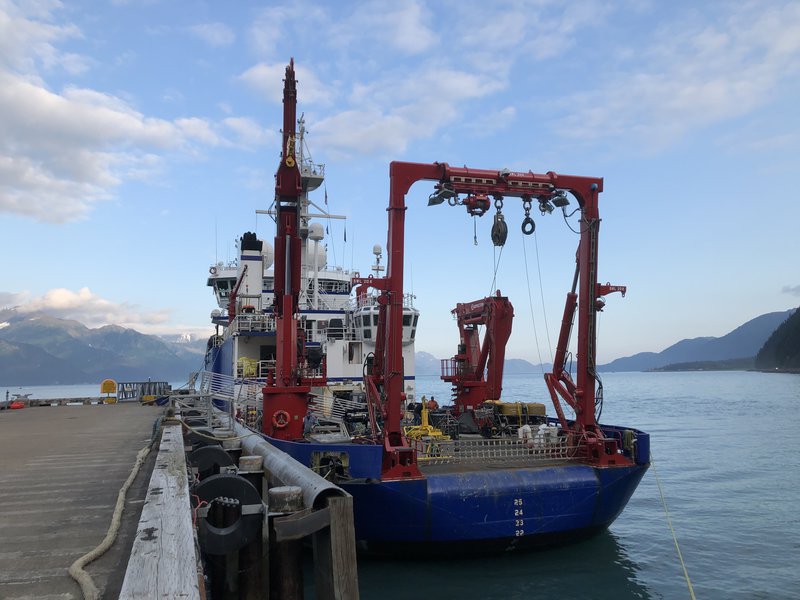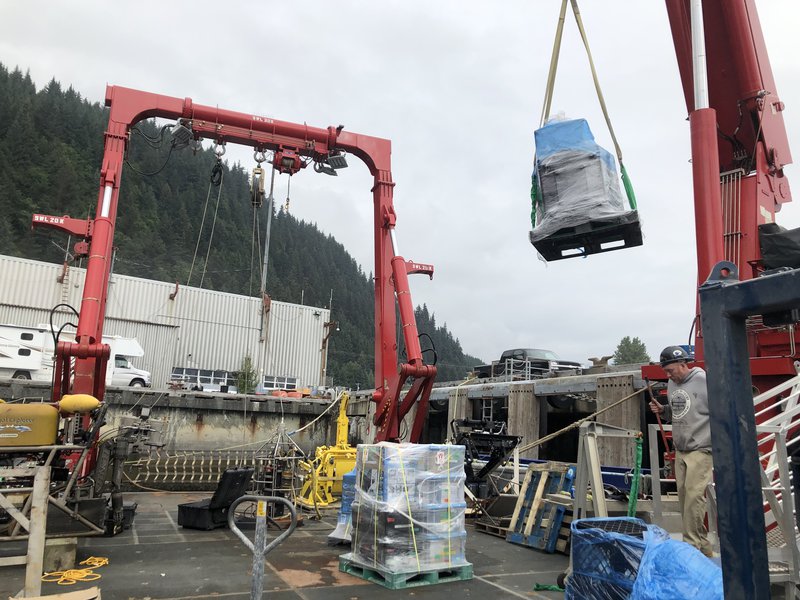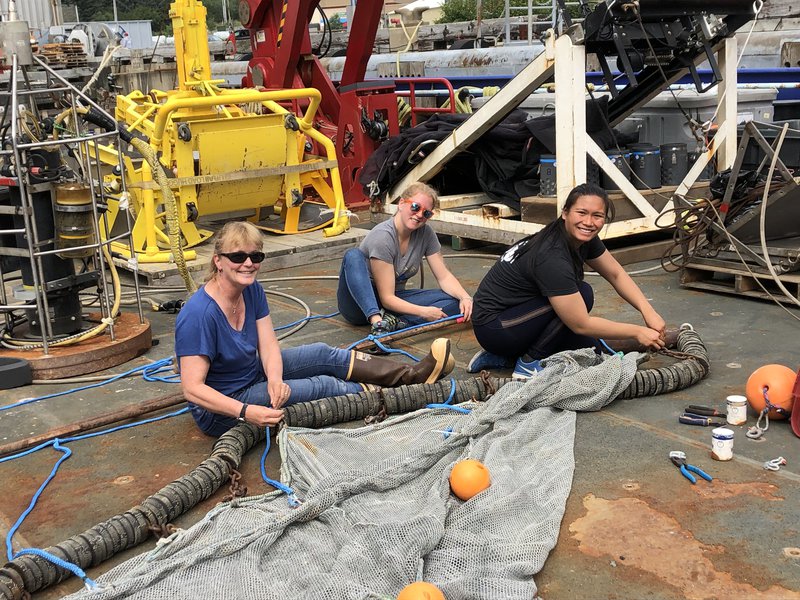
By Katrin Iken, Professor in Marine Biology, College of Fisheries and Ocean Sciences - University of Alaska Fairbanks
July 21, 2019
The beginning of a research cruise is like living in a beehive. A group of people, many of whom have not met before, meet together on a research vessel that many have not used before. The primary focus for everybody is to find their gear that has been shipped to the port location weeks before and make sure everything has arrived. Piles of boxes and large research equipment and sampling tools are in the large warehouse of the Seward Marine Center next to the dock where the vessel Sikuliaq is moored.

Sikuliaq docked in Seward, Alaska, ready for her next cruise to the Gulf of Alaska Seamounts. Image courtesy of Katrin Iken, University of Alaska Fairbanks. Download larger version (jpg, 2.6 MB).
Next, all the equipment is moved onto the ship. The first piece of equipment to be loaded is the ROV – or remotely operated vehicle (see the Mission Plan). It is not just the ROV itself, which is about the size of a Smart car, but also a large winch, which holds the wire that is being used to let the ROV overboard and send electrical signals so the ROV can be maneuvered. It also is a 20-by-4 foot van in which the control center for the ROV is housed. It is a good thing that the back deck of the Sikuliaq is rather large as we also have to load several large plankton nets and bottom sampling devices.

Sikuliaq being loaded with science gear. Image courtesy of Katrin Iken, University of Alaska Fairbanks. Download larger version (jpg, 5.7 MB).
For most of the day, the ship crane is moving pallets of boxes from the pier to the ship, where the ship and science crews sort through everything and start putting things away. Imagine you move into a new, completely empty house and all your furniture and boxes all arrive at the same time. Yet, at the end of the day, most of the boxes are stored inside the ship, the sampling equipment on deck is assembled and tied down so nothing will move around while we are underway, and working stations inside the labs are set up. It will still take a few days to get everything really squared away and for every piece to find its place, but at the end of the day, we are in a good position to soon start our voyage into the Gulf of Alaska and towards our first sampling station.

The benthic team is preparing a fish trawl net, ready to explore the deep seafloor. Image courtesy of Jim Bertramson, Gulf of Alaska Seamounts 2019. Download larger version (jpg, 6.5 MB).